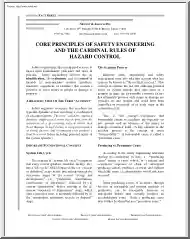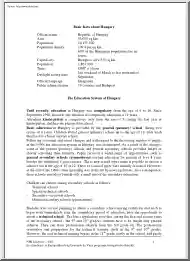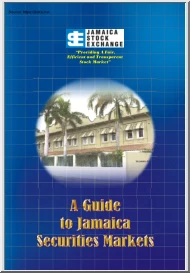A doksi online olvasásához kérlek jelentkezz be!

A doksi online olvasásához kérlek jelentkezz be!
Nincs még értékelés. Legyél Te az első!
Mit olvastak a többiek, ha ezzel végeztek?
Tartalmi kivonat
Source: http://www.doksinet CASE REPORT Mitochondrial DNA: State of Tennessee v. Paul Ware By C. Leland Davis, ADA District Attorney’s Office, Chattanooga, TN CASE SYNOPSIS In September 1996, a new evidence tool was used for the first time in a United States courtroom. Mitochondrial DNA (mtDNA) evidence was introduced in a Tennessee murder prosecution against twenty-seven-year-old Paul Ware. Without the mtDNA results there was only circumstantial evidence pointing to Ware as the suspect in the rape and murder of a fouryear-old girl. The defense claimed that another man in the home, the babysitter, had framed Ware, who was found drunk and asleep next to the body of the child. Significantly, the little girl's blood was not found on the suspect, nor was his semen found on her. However, during the autopsy, a small red hair was discovered in the throat of the victim and several small red hairs were found in a bed at the crime scene. Mitochondrial DNA was extracted from two of the
hairs recovered from the crime scene. One from the pharynx of the victim and one from the bed sheet in the room where the rape was believed to have occurred. Mitochondrial DNA was also extracted from a sample of Paul Ware's saliva and from the victim's blood. The mtDNA sequence from the hair in the pharynx and from the hair found on the sheet were compared and found to be exact mtDNA matches of each other. They were further compared to the saliva sample of the defendant and found to match. Each of these three mtDNA samples was compared to the known mtDNA sequence of the victim, and did not match. The Ware case in Tennessee in 1996 was the first case in the United States where mitochondrial DNA evidence was introduced at trial. Council in South Carolina has successfully followed the admissibility of this type of DNA evidence in the U.S courts The statistical interpretation of mtDNA sequence information is relatively straightforward. A calculation of the frequency of a
sequence is simply the number of times the particular sequence has been observed within a specified region, divided by the number of samples in the appropriate database. The current FBI database contains a total of 742 individuals The particular sequence that was obtained from Paul Ware, and from the two hairs recovered from the victim and from the crime scene, had never been seen before. MITOCHONDRIAL DNA TESTING Mitochondrial DNA can and should be the method routinely used with certain classes of biological evidence that, by nature, have very little nuclear DNA, e.g, telogen hairs, hair shafts, bones and teeth. Mitochondria are the sites of a series of chemical reactions that convert simple sugars into the energy that fuels the multiple reactions necessary for the body to function and are found outside the nucleus in the cytoplasm of the cell. Mitochondria contain their own DNA. This DNA differs from that found in the nucleus in three main ways: First, it is smaller than nuclear DNA
and typically exists as a single circular molecule. Second, mitochondrial DNA is inherited solely from the mother, whereas nuclear DNA is inherited equally from both parents. Third, each mitochondrion contains many copies of the mtDNA molecule As each cell may contain many mitochondria, there are therefore many more copies of mtDNA than nuclear DNA present in the cell. The advantage of mtDNA typing over nuclear DNA typing techniques is the high number of copies present per cell and hence the added sensitivity in cases where nuclear DNA is significantly degraded, cannot be isolated or is present in extremely limited amounts. Previously mtDNA typing has been used to identify the bones of ancient remains, such as those of soldiers from the Vietnam War and in the highly publicized case of the identification of the remains of Tzar Nicholas II of Russia. 6 GenePrint™ 1998 Source: http://www.doksinet CASE REPORT Figure 1. A schematic representation of the process of isolation and
amplification of the hypervariable regions of mitochondrial DNA (HV1 and HV2). The amount of mtDNA isolated from such specimens may be very small, so DNA extraction is followed by PCR amplification, a process that allows the production of many copies of the region of mtDNA of interest. During the PCR process, specific hypervariable regions of the mitochondrial genome are amplified. There is little legal dispute about the accuracy of the PCR process as it relates to the validity of mtDNA typing. After amplification is complete, the mtDNA is sequenced using conventional, widely accepted sequencing methods. The sequences of mtDNA isolated from evidentiary and known samples are then compared. The sequencing method used for mtDNA typing is the same as that developed by Frederick Sanger (1), for which he won a Nobel Prize. This technique is currently used in hundreds of laboratories throughout the world. THE MITOCHONDRIAL DNA RESEARCH PROJECT The involvement of the FBI laboratory with
research in mtDNA began in 1990 when a feasibility study was performed to determine whether mtDNA analysis would be useful for forensic applications. In 1995, the FBI Crime Lab, under the direction of Mark GenePrint™ 1998 R. Wilson and Joseph A DiZinno, conducted and published a validation study (2). As is the case with traditional DNA typing methods, the validation study is important for forensic purposes – enabling prosecutors to show judges and juries that, no matter how the DNA has been degraded, that exposure does not affect its genetic integrity. In June 1996, the FBI Crime Lab ran its first case for use at trial – the Ware case. PEER-REVIEWED PAPERS REGARDING THE FORENSIC UTILITY OF MITOCHONDRIAL DNA Mitochondrial DNA has been studied extensively. There are more than 600 papers in the FBI's research database regarding the forensic utility of mtDNA. A detailed bibliography can be obtained by writing to the author at the District Attorney’s Office, 600 Market
Street, Chattanooga, TN 37402, or may be obtained directly from the Hairs and Fibers Unit of the FBI Crime Lab. is currently the only lab in the United States preparing this work for use in the U.S court system, but State labs will follow in the relatively near future as this type of evidence becomes widely accepted. Most recently, in Aitken, South Carolina, a capital conviction was returned – substantially on mtDNA evidence – against a 30-year-old defendant whose pubic hair was present on the bed sheets of a 72-year-old murder victim. The Ware case in Tennessee was first; Council in South Carolina has successfully followed mtDNA's admissibility in the U.S courts By the end of 1997, I expect this proof to be admitted in more than a dozen other jurisdictions throughout the United States. REFERENCES 1. Sanger, F, Nicklen, S, and Coulson, AR (1977) Proc. Natl Acad Sci USA 74, 5463 2. Wilson, MR et al (1995) Int J Leg Med 108, 68. SUMMARY Mitochondrial DNA is a tool available in
cases where DNA is degraded or scarce. This includes samples not traditionally thought of as available for DNA identification at trial such as bone fragments, teeth, hair and other biological trace evidence. The FBI Crime Lab 7
hairs recovered from the crime scene. One from the pharynx of the victim and one from the bed sheet in the room where the rape was believed to have occurred. Mitochondrial DNA was also extracted from a sample of Paul Ware's saliva and from the victim's blood. The mtDNA sequence from the hair in the pharynx and from the hair found on the sheet were compared and found to be exact mtDNA matches of each other. They were further compared to the saliva sample of the defendant and found to match. Each of these three mtDNA samples was compared to the known mtDNA sequence of the victim, and did not match. The Ware case in Tennessee in 1996 was the first case in the United States where mitochondrial DNA evidence was introduced at trial. Council in South Carolina has successfully followed the admissibility of this type of DNA evidence in the U.S courts The statistical interpretation of mtDNA sequence information is relatively straightforward. A calculation of the frequency of a
sequence is simply the number of times the particular sequence has been observed within a specified region, divided by the number of samples in the appropriate database. The current FBI database contains a total of 742 individuals The particular sequence that was obtained from Paul Ware, and from the two hairs recovered from the victim and from the crime scene, had never been seen before. MITOCHONDRIAL DNA TESTING Mitochondrial DNA can and should be the method routinely used with certain classes of biological evidence that, by nature, have very little nuclear DNA, e.g, telogen hairs, hair shafts, bones and teeth. Mitochondria are the sites of a series of chemical reactions that convert simple sugars into the energy that fuels the multiple reactions necessary for the body to function and are found outside the nucleus in the cytoplasm of the cell. Mitochondria contain their own DNA. This DNA differs from that found in the nucleus in three main ways: First, it is smaller than nuclear DNA
and typically exists as a single circular molecule. Second, mitochondrial DNA is inherited solely from the mother, whereas nuclear DNA is inherited equally from both parents. Third, each mitochondrion contains many copies of the mtDNA molecule As each cell may contain many mitochondria, there are therefore many more copies of mtDNA than nuclear DNA present in the cell. The advantage of mtDNA typing over nuclear DNA typing techniques is the high number of copies present per cell and hence the added sensitivity in cases where nuclear DNA is significantly degraded, cannot be isolated or is present in extremely limited amounts. Previously mtDNA typing has been used to identify the bones of ancient remains, such as those of soldiers from the Vietnam War and in the highly publicized case of the identification of the remains of Tzar Nicholas II of Russia. 6 GenePrint™ 1998 Source: http://www.doksinet CASE REPORT Figure 1. A schematic representation of the process of isolation and
amplification of the hypervariable regions of mitochondrial DNA (HV1 and HV2). The amount of mtDNA isolated from such specimens may be very small, so DNA extraction is followed by PCR amplification, a process that allows the production of many copies of the region of mtDNA of interest. During the PCR process, specific hypervariable regions of the mitochondrial genome are amplified. There is little legal dispute about the accuracy of the PCR process as it relates to the validity of mtDNA typing. After amplification is complete, the mtDNA is sequenced using conventional, widely accepted sequencing methods. The sequences of mtDNA isolated from evidentiary and known samples are then compared. The sequencing method used for mtDNA typing is the same as that developed by Frederick Sanger (1), for which he won a Nobel Prize. This technique is currently used in hundreds of laboratories throughout the world. THE MITOCHONDRIAL DNA RESEARCH PROJECT The involvement of the FBI laboratory with
research in mtDNA began in 1990 when a feasibility study was performed to determine whether mtDNA analysis would be useful for forensic applications. In 1995, the FBI Crime Lab, under the direction of Mark GenePrint™ 1998 R. Wilson and Joseph A DiZinno, conducted and published a validation study (2). As is the case with traditional DNA typing methods, the validation study is important for forensic purposes – enabling prosecutors to show judges and juries that, no matter how the DNA has been degraded, that exposure does not affect its genetic integrity. In June 1996, the FBI Crime Lab ran its first case for use at trial – the Ware case. PEER-REVIEWED PAPERS REGARDING THE FORENSIC UTILITY OF MITOCHONDRIAL DNA Mitochondrial DNA has been studied extensively. There are more than 600 papers in the FBI's research database regarding the forensic utility of mtDNA. A detailed bibliography can be obtained by writing to the author at the District Attorney’s Office, 600 Market
Street, Chattanooga, TN 37402, or may be obtained directly from the Hairs and Fibers Unit of the FBI Crime Lab. is currently the only lab in the United States preparing this work for use in the U.S court system, but State labs will follow in the relatively near future as this type of evidence becomes widely accepted. Most recently, in Aitken, South Carolina, a capital conviction was returned – substantially on mtDNA evidence – against a 30-year-old defendant whose pubic hair was present on the bed sheets of a 72-year-old murder victim. The Ware case in Tennessee was first; Council in South Carolina has successfully followed mtDNA's admissibility in the U.S courts By the end of 1997, I expect this proof to be admitted in more than a dozen other jurisdictions throughout the United States. REFERENCES 1. Sanger, F, Nicklen, S, and Coulson, AR (1977) Proc. Natl Acad Sci USA 74, 5463 2. Wilson, MR et al (1995) Int J Leg Med 108, 68. SUMMARY Mitochondrial DNA is a tool available in
cases where DNA is degraded or scarce. This includes samples not traditionally thought of as available for DNA identification at trial such as bone fragments, teeth, hair and other biological trace evidence. The FBI Crime Lab 7




